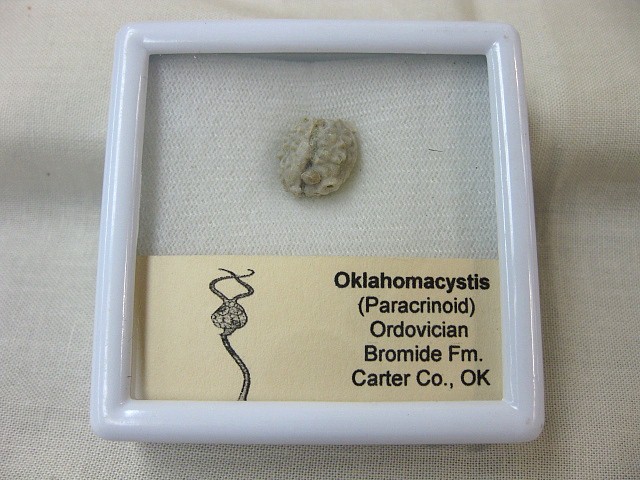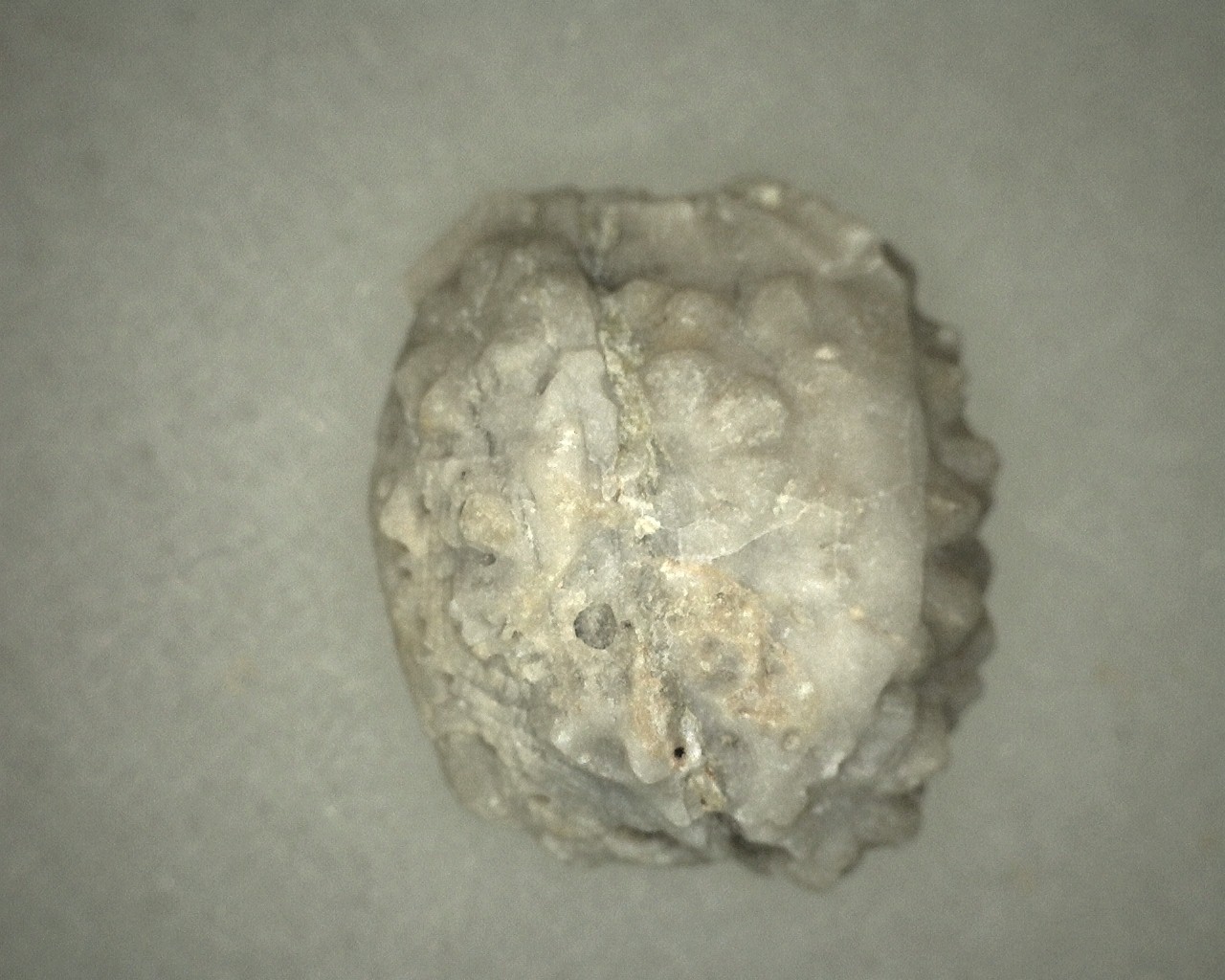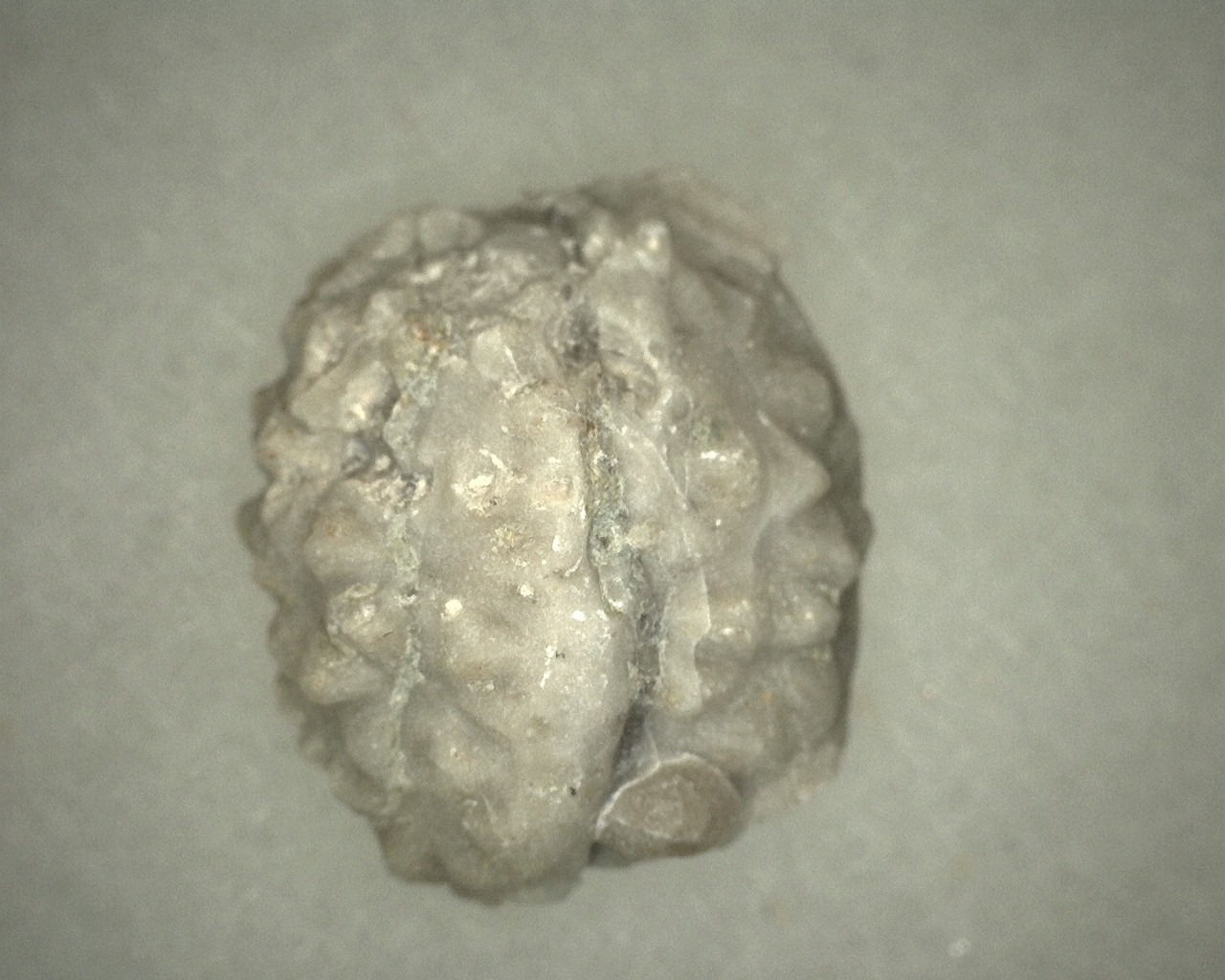Description
- Oklahomacystis
- Paracrinoid
- Ordovician Age
- Bromide Formation
- Carter County, Oklahoma
- Cystoid measures approx. 1/2″ long
- Specimen will come in the 3.25″ x 4.25″ Riker Mount with Label as Shown
Paracrinoids, are extinct marine animals that make up the class Paracrinoidea of the echinoderms (phylum Echinodermata), and are closely related to crinoids. They lived in shallow seas during the Early Ordovician through the Early Silurian.
Paracrinoids are characterized by a mouth with two to five feeding arms arranged asymmetrically. They have a U-shaped gut, and their anus is located next to the mouth. They have irregularly shaped bodies (theca), and a stem, similar to crinoids, and may have used the stem to attach themselves to a substrate, although some reconstructions show them partially buried in sediment







